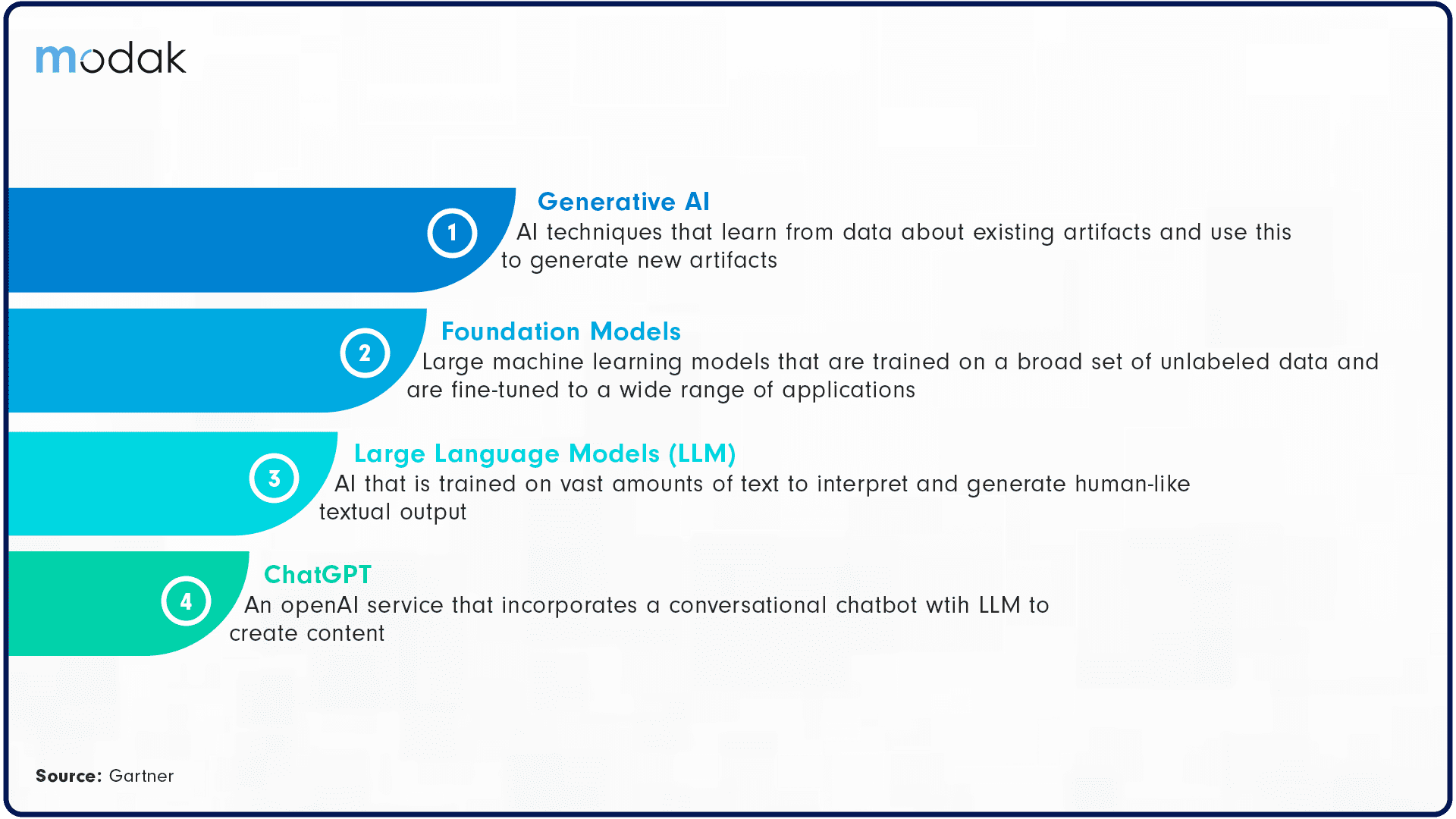Generative AI employs a variety of techniques that are in a constant state of evolution. At the forefront of these techniques are foundational AI models, which undergo training on extensive collections of unlabelled data. These models can subsequently be fine-tuned for various tasks. Despite the demanding nature of creating and training these models, involving intricate mathematical processes and significant computational resources, they essentially function as prediction algorithms.
One of the foundational AI models is Large Language Models or LLMs. LLMs are trained on vast amounts of text data to generate and produce new textual content.

Generative AI
The process of generative AI entails training these models on extensive datasets to discern the underlying patterns, structures, and characteristics of the data. Once this training phase is complete, these models can autonomously generate fresh content by either selecting samples from the learned distribution or ingeniously repurposing existing inputs.
Beyond its role in enhancing individual creativity, generative AI serves as a valuable tool to augment human efforts and improve various activities. For instance, it plays a crucial role in data augmentation by creating additional training instances, thereby enhancing the efficacy of machine learning models. Additionally, generative AI can enrich datasets with lifelike graphics, proving invaluable in computer vision applications like object recognition and image synthesis.
Large Language Models
Use Cases and Applications of Generative AI
Generative AI has found applications across various domains, transforming industries in the process:
- Art and Creativity: Generative AI is used to create original artworks, music compositions, and even poetry. Artists can collaborate with AI to explore new creative horizons.
- Content Generation: It enables the automated creation of articles, blog posts, and marketing copy, saving time and effort for content creators.
- Gaming: AI-driven game design generates landscapes, characters, and quests, enhancing the gaming experience.
- Drug Discovery: In the pharmaceutical industry, Generative AI designs novel drug compounds with desired properties, accelerating the drug development process.
LLM Use Cases
Language Models, including large-scale models like GPT-3, have sparked a revolution in natural language processing:
- Conversational Agents: Language Models power chatbots and virtual assistants that engage in human-like conversations, assisting users with information and tasks.
- Language Translation: They facilitate accurate and contextually relevant language translation, breaking down language barriers.
- Content Generation: From writing code snippets to composing poetry, Language Models aid in generating diverse forms of content.
- Research and Summarization: These models can sift through vast amounts of text to extract relevant information and summarize it efficiently.
Conclusion
As these technologies continue to evolve, ethical considerations and responsible usage become paramount. Striking a balance between the potential benefits and ethical concerns will shape the future of AI-driven creativity. Whether it's generating a captivating story or providing insightful information, Generative AI and Language Models are shaping a world where AI is not just a tool, but a creative collaborator.
About Modak
Modak is a solutions company dedicated to empowering enterprises in effectively managing and harnessing their data landscape. They offer a technology, cloud, and vendor-agnostic approach to customer datafication initiatives. Leveraging machine learning (ML) techniques, Modak revolutionizes the way both structured and unstructured data are processed, utilized, and shared.
Modak has led multiple customers in reducing their time to value by 5x through Modak’s unique combination of data accelerators, deep data engineering expertise, and delivery methodology to enable multi-year digital transformation. To learn more visit or follow us on LinkedIn and Twitter.


